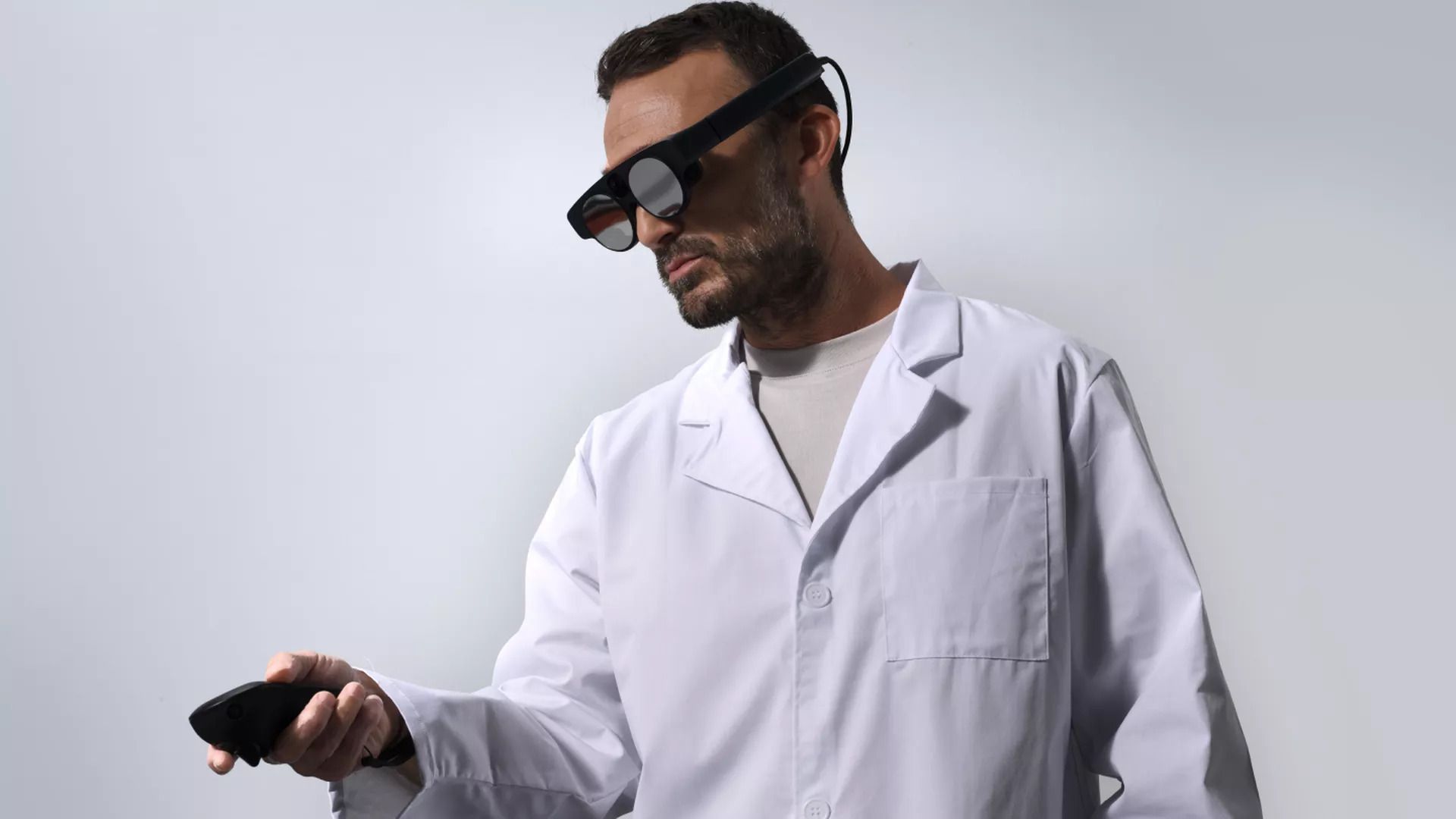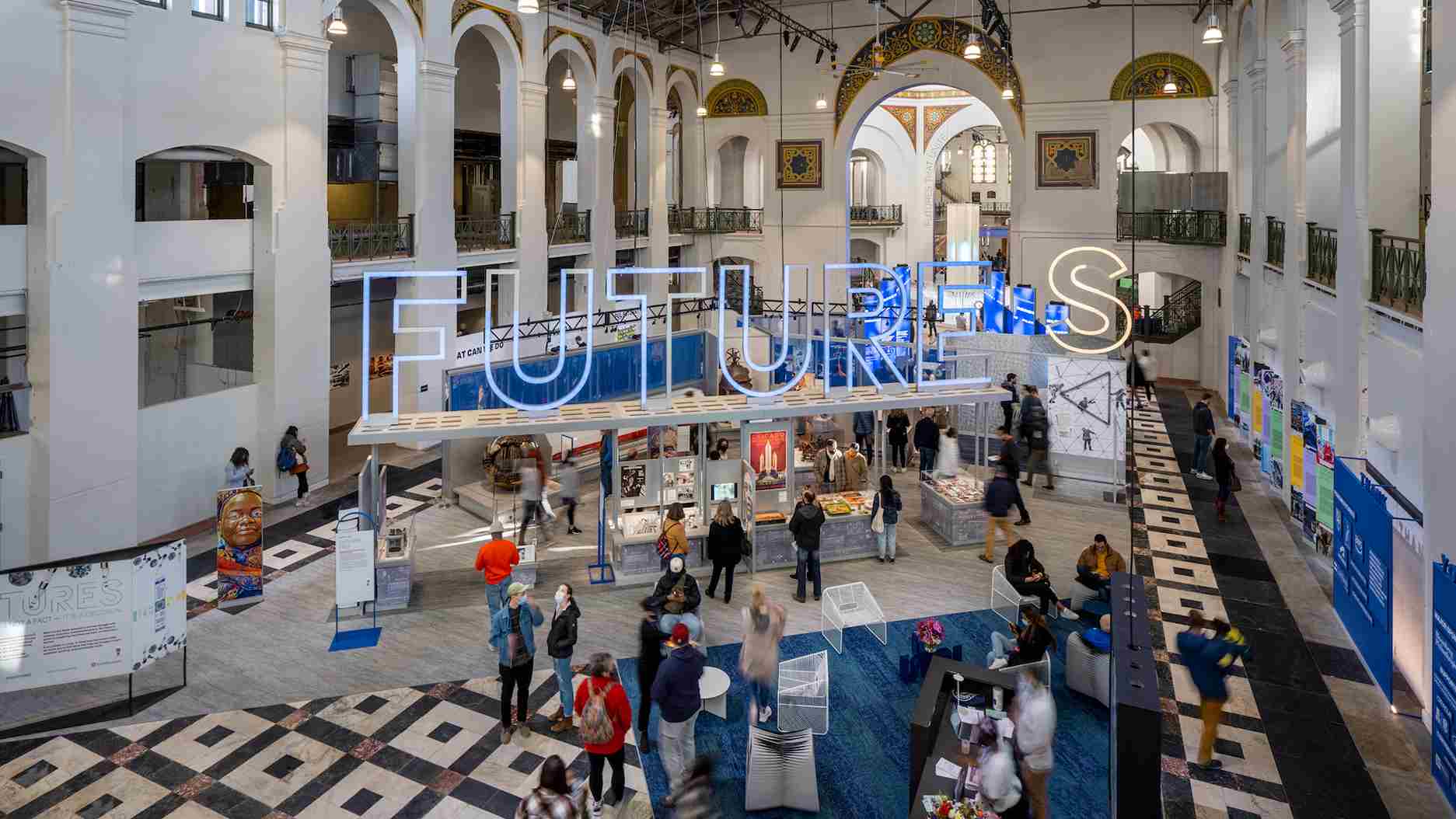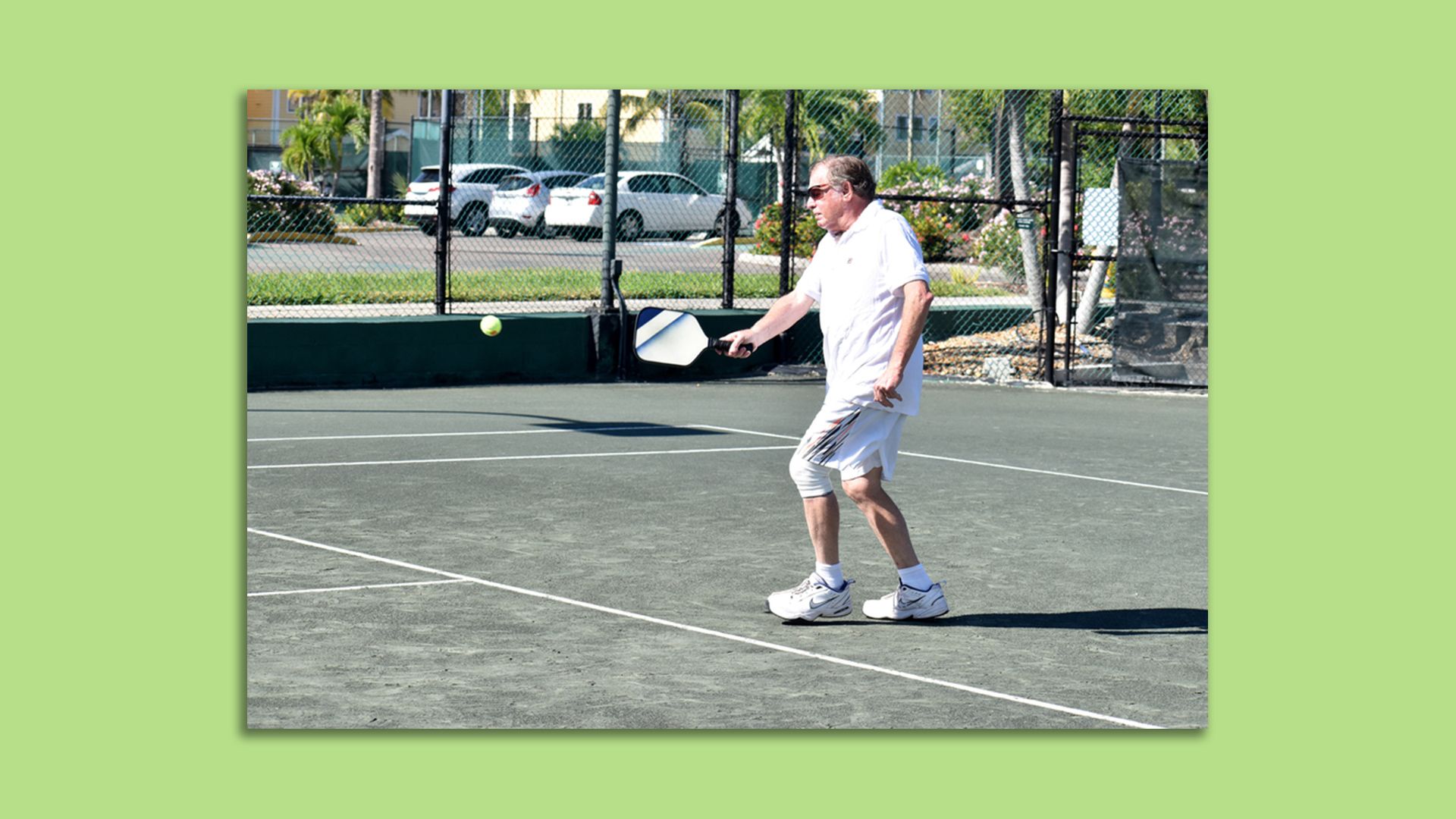| | | | | | | Presented By SoftBank Group | | | | Axios What's Next | | By Jennifer A. Kingson, Joann Muller and Erica Pandey ·Mar 14, 2022 | | Happy Monday! We're back after a week's hiatus. - In today's reader photo, Yoram Ariely of Longboat Key, Florida, shows us a sport he created that's gaining some traction in his community.
- Have a photo that speaks to the way we'll live, work, play and get around in the days ahead? Email us at whatsnext@axios.com.
- Did you know? Gypsy moths have been renamed — they're now "spongy moths" — to eliminate the ethnic slur.
Today's Smart Brevity count: 1,093 words ... 4 minutes. | | | | | | 1 big thing: Exclusive poll: Where college students want to move |  Data: Generation Lab/Axios research; Map: Kavya Beheraj/Axios Seattle is America's most desired post-graduation destination for college students, according to the new Axios-Generation Lab Next Cities Index, which tracks rising U.S. work and culture trends through geographic preferences, Neal Rothschild, Erica Pandey and Kavya Beheraj write. Why it matters: The Emerald City, with its superstar tech-hub status, cool climate, green-energy embrace and music and art scene, eclipsed two top-dollar coastal destinations — New York and Los Angeles — among young adults looking to move. Seattle also drew a more bipartisan appeal. - "It feels like a young-person city," says Riley Harbick, a computer science major in his senior year at James Madison University in Harrisonburg, Virginia, who aspires to move to Seattle.
The big picture: Half of the survey's 2,109 respondents said they wanted to live outside their home states after graduation; about one in four want to live back in their hometowns. - Denver and Boston filled out the top five wish list, after Seattle, NYC and L.A.
- Health care was the top industry choice for careers (29%), followed by education and research (15%), and tech (12%).
Between the lines: Party identification correlated with students' preferences. Austin, Texas, was the top choice for young Republicans who want to leave their home state after graduation. New York topped the list for young Democrats. Seattle won big with independents. Read the full story. |     | | | | | | 2. A record number of homes are worth more than $1 million |  Data: Redfin; Chart: Baidi Wang/Axios The number of U.S. homes worth more than $1 million nearly doubled since before the pandemic, to 8.2% in February from 4.8% in February of 2020, according to Redfin. Why it matters: While rapidly appreciating home values are a windfall for those who own them, they also mean that more and more Americans are priced out of the market, Jennifer A. Kingson writes. - Incomes are rising, but not as quickly as home prices — leaving many people stuck as renters.
Driving the news: Redfin, the discount real estate brokerage, says the percentage of U.S. homes valued at the symbolically meaningful sum of $1 million or more has hit a record — a trend led by the Bay Area. - Nearly 9 out of 10 properties in San Francisco and San Jose are million-dollar listings.
- Anaheim, California, saw the biggest increase in $1M+ homes: 55% of the housing stock fell into that category last month, versus 27% two years ago.
- Seven of the top 10 cities for $1M+ homes are in California — led by San Francisco, where the percentage of properties worth that amount was a whopping 88.7% in February.
Details: Here's a selection of metro areas and their percentage of homes worth more than $1 million: - Albuquerque, New Mexico: 25%
- Boston: 18.1%
- Austin, Texas: 12.3%
- Washington, D.C.: 10.9%
- Denver: 9.7%
- Phoenix: 7.8%
On the low end, Elgin, Illinois, came in at just 0.1% — a lower share than any other metro area Redfin analyzed. - Next came El Paso, Texas; Columbia, South Carolina; McAllen, Texas; Dayton, Ohio; and Buffalo, New York, all at 0.2%.
Read the full story. |     | | | | | | 3. New AR headset targets medical, manufacturing uses |  | | | Image: Magic Leap | | | | Magic Leap has a new version of its augmented reality headset, this time specifically targeted toward enterprise use, particularly in medical, manufacturing and public sector settings, Ina Fried writes in Axios Login. Between the lines: The company was initially hoping to sell a consumer product but, like others in the VR and AR space, it realized that its product was still too expensive and bulky for mainstream consumers. As part of its business pivot, Magic Leap significantly cut its staff and brought in Peggy Johnson, a veteran Microsoft and Qualcomm executive, to help lead the transformation. Last year, it also raised $500 million from existing investors. - "We feel very strongly we have the right focus and the right product," Johnson said in an interview with Axios.
- Johnson compared the AR market today to the early days of the mobile phone market, when bulky devices used by professionals paved the way for sleeker, less expensive devices for the masses.
Details: The Magic Leap 2, like its predecessor, pairs a steampunk-inspired headset with a computer pack. This time around, though, Magic Leap is using open-source Android rather than a custom OS and has switched from an Nvidia processor to a semi-custom AMD chip. - The biggest changes are a significantly wider field of view and sharper display resolution.
- Early devices are in the hands of a few customers, with wider testing expected in the coming months.
Read the full story. |     | | | | | | A message from SoftBank Group | | Creating a more empowered, connected future | | |  | | | | SoftBank Group — a global investor in AI and transformative technology — is proud to support the Smithsonian's FUTURES exhibit, at the Arts + Industries Building through July 6. Come experience this interactive, cutting-edge technology journey, and be part of creating a better future. | | | | | | 4. What we're reading |  | | | Scuba divers pass coral reefs in the Philippines. Photo: Dante Diosina Jr./Anadolu Agency via Getty Images | | | | Reef ball burials: the new trend for becoming 'coral' when you die (The Guardian) - Avid scuba divers and others are opting to become part of a coral reef when they die: Their cremated remains are "mixed into a perforated concrete dome, known as a reef ball" and "then become part of an artificial reef, having a second life on the seabed."
"Nobody is ready:" Many U.S. cities lack resources to chase $1 trillion infrastructure windfall (Reuters) - "After decades of belt tightening, many [local governments] lack the bureaucratic muscle" to fill out the funding applications that would help them get a piece of President Biden's big infrastructure law, which will dole out money for road and bridge repair, environmental cleanup and myriad other projects.
NYC's First Net Zero Community Brings Housing to Storm-Ravaged Neighborhood (Bloomberg CityLab) - A $1 billion housing development being built in the Rockaways section of Queens — ravaged by Superstorm Sandy in 2012 — has a goal of net-zero carbon emissions.
- The development, Arverne East, "could be a proving ground for a host of climate and economic policies," per Bloomberg CityLab. "The development will incorporate geothermal heating, passive house design to optimize energy efficiency, and a plan to raise the storm surge elevation, given the land's vulnerability to flooding."
|     | | | | | | 5. Reader photo of the day: Beckyball |  | | | Yoram Ariely demonstrates "Beckyball." Photo courtesy of Yoram Ariely | | | | In response to our article about pickleball courts becoming a must-have at upscale new real estate developments, Yoram Ariely of Longboat Key, Florida, wrote, "I developed Beckyball, which is very similar to pickleball, only it is played on existing tennis courts, hard and soft." - "Playing pickleball on soft courts is a blessing for people with joint issues," Ariely notes.
- "Hardcourt tennis courts are available in abundance. No need for new construction."
- "Playing Beckyball requires two adjustments to the court, both very simple. The first is to draw a 'kitchen' line." [The kitchen is the non-volley zone of a pickleball court.]
- "The other is the net height. Either leave the net height as is (36 inches) or lower it to 34 inches by sliding the net's center strap to the right or the left."
Fun fact: An article in the Longboat Key Observer notes that Ariely invented the sport in 2019 and named it after his wife. |     | | | | | | A message from SoftBank Group | | Accelerating human progress through technology | | |  | | | | At SoftBank Group, we invest in companies that accelerate human progress through technology. That's why we're proud to support the Smithsonian's FUTURES exhibit, which challenges us to envision how technology can enable a more empowered, connected world. | | | | Was this email forwarded to you? Get your daily dose of What's Next magic by signing up for our free newsletter here. |  | It's called Smart Brevity®. Over 200 orgs use it — in a tool called Axios HQ — to drive productivity with clearer workplace communications. | | | | | | Axios thanks our partners for supporting our newsletters. If you're interested in advertising, learn more here.
Sponsorship has no influence on editorial content. Axios, 3100 Clarendon Blvd, Suite 1300, Arlington VA 22201 | | | You received this email because you signed up for newsletters from Axios.
Change your preferences or unsubscribe here. | | | Was this email forwarded to you?
Sign up now to get Axios in your inbox. | | | | Follow Axios on social media:    | | | | | |










No comments:
Post a Comment